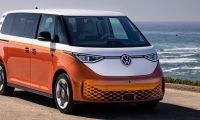As Russell Wager, Kia America’s vice president of marketing recently told Green Car Reports, “the current problem with plug-in hybrids (PHEVs) is the need to explain them to customers”. As an owner of two different PHEVs driven over 50,000 miles combined, I couldn’t agree more. PHEVs are very complex machines that can easily overwhelm uninformed drivers and if not used with careful attention to settings and technique, can greatly disappoint both their owners and governmental agencies that set expectations for their emissions and or fuel efficiency. I would argue that to a lesser extent this is even true of non-plug in hybrid electric vehicles (HEVs) as even HEVs have unique traits that new customers need to understand if they are to have their expectations met. What are those differences, you may ask? There are several but first among them is the likely fact that HEVs often get better mileage in city driving (rather than highway driving) which is the opposite for “traditional” internal combustion engined (ICE) vehicles. Other differences may include: cabin heating performance, different maintenance schedules and requirements, and the differing technical features and functions (in both software and hardware, potentially). PHEVs may or may not use their gas engines for heat or even for propulsion in most circumstances. How to get the “promised” fuel efficiency that PHEVs present on their window stickers is something that requires specific driving patterns and technique, things that dealers (never mind manufacturers) are almost certain to never explain to new PHEV customers. If drivers don’t understand the unique qualities and requirements of either type of hybrid before they buy one, they are much more likely to have a negative experience and be turned off by the vehicles.
I’ll take my drive from the Seattle suburbs to the Northern Oregon coast yesterday as an example. The total distance I drove was 204 miles and I used approximately 5 gallons of gas, which roughly works out to around 41 MPG. If you are a new PHEV owner and don’t understand what “MPGe” means on your new vehicle’s window, you might think that a PHEV like my Kia Sorento should get about 79 miles per gallon. Even if you read closely and see that the Sorento PHEV gets about 34 MPG combined when operating as a standard hybrid, you might not get the 41 MPG that I did if you didn’t stop to fully charge the battery in the middle of drive (which I did when I spent the night at my brothers about 30% of the way into the drive). or if you didn’t drive under the same conditions or use the same techniques I did. For reference, the highest speed limit on my drive was 60 MPH for approximately half of the distance, and 45-55 MPH for most of the rest of it and I mostly drove just a few MPH over the speed limit. I also accelerated gently, and used the different modes my PHEV offers as follows: I used the Sport mode for about 24 miles (to regenerate about 12 miles of EV range) and SMART mode for most of the rest of the distance (further adjusting the mode by switching between HEV and Automatic with the separate mode switching button between the seats in order to “force” my Sorento PHEV to actually use gas or electric power when it was advantageous to do so). If for example you made this drive without the benefit of one stop to charge up in the middle, left without a full charge on your hybrid battery, or drove faster or harder than I did (or skipped the 5 miles or so that I drove on the beach to see a rare fin whale that had beached itself), you would have gotten different fuel economy results. I would estimate that had I drove more like 7-10 MPH over the limit (as many people on the road were doing), not had an overnight recharge, and just kept my rig in Auto or SMART mode for the entire drive (or kept toggling between Sport and EV modes) I would have gotten about 35 MPG, or less, because Auto and SMART often are not that “smart” about when they use battery versus gas. And really, how could my Kia be that smart if the vehicle doesn’t know where it is going, whether it is going uphill or not, etc. (I don’t often use the onboard GPS and I assume that it is “unaware” of destination or topography from my smartphone that is plugged in to the dash)?
So, as the VP from Kia called out, if automakers are hoping to increase sales of PHEVs (and even standard HEVs in some ways or cases), they are going to have to “explain” them to customers so that expectations can be set appropriately. How might manufacturer’s do that? The obvious means would be through marketing and “training” or orientation by dealers. Will manufacturers want to invest money into new marketing that explains the complexities of PHEVs (and hybrids) in appropriate and accessible terms? Will dealers want to invest in training staff and spending time with customers to orient them to peculiarities of hybrids? I would expect, by and large, the answers to both those questions will be no, though I do expect some brands will at least invest minimally in hybrid specific marketing. If that all turns out to be the case, then HEVs might generally be easier to sell and find more “happy” customers since they require less adaptation from drivers who are new to the technology. PHEVs will continue to sell in relatively small numbers compared to HEVs given their more complex “requirements”. Another option that I personally think more manufacturers should pursue, with the design of PHEVs, is to make them “idiot proof” (not that I think we should consider anyone new to PHEVs idiots). If manufacturers simplify the way PHEVs operate, for example always default to the battery for propulsion until it is depleted no matter what position the accelerator is in, it might make more sense to new owners. Of course, doing that might mean larger batteries, more powerful electric motors or more powerful gas engines are needed to make PHEVs “performant” under all states of charge. It is a complicated situation for the manufacturers too, no doubt.
What do you think, reader? Do you fully understand the way PHEVs and HEVs operate? Do you find them to be confusing at all? Or do you pretty much always get what you expect to get out of them? Please leave your questions and comments below.
Images courtesy of Justin Hart.
Justin Hart has owned and driven electric vehicles for over 15 years, including a first generation Nissan LEAF, second generation Chevy Volt, Tesla Model 3, an electric bicycle and most recently a Kia Sorento PHEV. He is also an avid SUP rider, poet, photographer and wine lover. He enjoys taking long EV and PHEV road trips to beautiful and serene places with the people he loves. Follow Justin on Torque News Kia or X for regular electric and hybrid news coverage.













Comments
In my old and inexpensively…
Permalink
I assume a HEV vehicle would be a better choice for me than a PHEV. Do you agree?
In my old and inexpensively(cheaply) made house, without solar panels, I would have to draw power for charging a PHEV from the electric company. I wonder how much it would cost to buy a charger and run wire for 240V to my garage? I believe I read that chargers can use 120V but then there might not be enough power to run some other household appliances at the same time? The charging of the car would take a long time at 120V. Is this correct? I assume the cost for an electrician to add 240V wiring plus the cost of a charger would exceed $1000. Would you please correct me where I have my "facts" wrong.
Thank you.
P.S. I drive about 5000 miles per year, mainly around town. I drive close to the speed limit and don't accelerate quickly, except in emergency situations. Every 6 weeks, I do drive 200 miles round trip on interstate roads at 75-80 mph. I think a HEV Kia Sportage is a better choice for me than a PHEV one.
If you only drive about 5…
Permalink
In reply to In my old and inexpensively… by Jan H (not verified)
If you only drive about 5,000 miles a year, a PHEV might not be the best choice, but it really depends. How much is the average price of gas where you live? How much does electricity cost per kWh? Are you considering new cars or only used ones? Do you live in a climate that experiences several months of below freezing temps?
To try and be more helpful I would need to know more details as per my questions, but in general (“your mileage may vary” as they say): all plug-in vehicles, whether they are hybrid or full EV, can charge on 120V however they can only recharge about 2-5 miles of range per hour of charging. 240V can be much faster and the cost to install wiring and charging equipment varies dramatically depending on existing wiring and service to the area being installed. I only paid about $500 for my 50amp outlet to be installed to charge my EV and I paid $0 for my 30 amp outlet to charge my PHEV (government grant covered the full cost and I got a charger for free too). But $1,000 is probably a good guess for an average price.
Otherwise, an EV would cost about 6 cents per mile to fuel assuming your per kWh price is the average price in the US (about 17 cents per) and you get 3 miles pf driving per kWh. If gas is also the US average at about $3.27 per gallon where you live. A hybrid that gets 43 MPG costs about 8 cents per mile to fuel. Since a PHEV would use some combination of both fuel sources it would be between the two values. That said, given your 5k annual miles I would say it mostly depends on what the purchase price of your vehicle is. A new or used 240 miles capable EV could be the cheapest option if it doesn’t cost much more than a hybrid option. I think you’ll have low fueling costs, regardless.